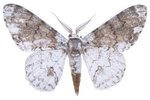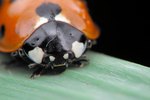
Caterpillars, in all of their creepy-crawly wonder, can make fun and educational pets. With more than 140,000 species in the world of butterflies and moths, you may find an array of different caterpillars by searching in your own backyard. Caterpillars require specific care and housing in order to thrive and grow into their next, very beautiful stages of life.
Finding a Caterpillar
Take the stem or leaf that you find your new crawly friend on. Don't simply take the caterpillar, because the plant he's found on can provide him with vital nutrients that he needs -- and besides, nobody wants their lunchtime interrupted. Avoid touching the caterpillar with your hands, because caterpillars are so fragile that you could harm them. Instead, gently place the leaf or stem into a container, such as a plastic jar or box. Take a few more stems or leaves from the plant your caterpillar was found on, and identify the plant for future reference.
Caterpillar Dwelling
Create a caterpillar dwelling by poking holes in the lid of a jar. As the caterpillar grows, a larger dwelling may be necessary to accommodate the little fellow. The jar should be big enough that a smaller jar can fit inside it. In the smaller jar, put some water and the plant your caterpillar was feasting on when you found him. Protect your caterpillar from falling into the water by covering the top of the small jar with cotton wool. For small caterpillars, soak a cube of oasis, which is used in flower arranging, in water instead and then gently push the plant's stems into the cube. Place a twig in the jar for the caterpillar to climb on, so he can reach his way up to the leaves and stem if needed.
Meal Time
Provide your caterpillar with fresh plant food every day. It's incredibly important you supply your caterpillar with the same type of plant he was eating when you found him, as caterpillars are particular little critters. Without the right type of food, they may eat other caterpillars who call the same jar home. As a caterpillar grows, a larger amount of food will be necessary to satisfy his appetite. As he grows, he'll go through the process of moulting, or shedding his skin.
Pupation
Provide your caterpillar with a proper site for pupation to take place once he's fully grown. When he's ready to pupate, your caterpillar will begin to spin a silk pad attached to a leaf, twig, or branch, depending on the type of caterpillar. He'll shed his skin one last time; his chrysalis is underneath this last layer of skin. Hooks, known as cremasters, can be seen on the end of the chrysalis. They will attach to the silk pad where the chrysalis will stay suspended during metamorphasis. His once caterpillar-shaped body will look more like a small mass as it hangs from the silk pad. Moth pupae will either spin silk cocoons as a protective casing around their pupa, hanging from bark or foliage, or they will burrow themselves into soil and pupate. When in doubt, provide both options for moth larvae. During the chrysalis and cocoon stages, little movement will be seen and no eating will take place.
Metamorphasis
Watch the pupa closely as it begins to hatch. Before hatching, the chrysalis will become transparent. Spring and early summer pupae will most likely hatch a few weeks after pupation. Autumn and winter pupae need to be stored under layers of soil, neatly placed in sealed containers and stored in a cool place that will not freeze or frost. They'll need to be kept in these containers until spring. Once spring arrives, place the pupae under a light layer of dirt. Mist them with water from time to time. This helps to create humidity, which will encourage butterflies to make their entrance into the world.
Butterfly Entrance
Watch closely for butterflies to make their way into the world. Place twigs and stems into the tank or area the butterflies will make their debut. Twigs and foliage are necessary for the butterfly to rest on while they dry their wings, or deformed wings can result. Take the butterflies to the same location they were found as caterpillars and release them.
References
Photo Credits
-
Ablestock.com/AbleStock.com/Getty Images
Writer Bio
Pamela Miller has been writing for health, beauty and animal health/welfare publications for seven years. Miller holds a Bachelor of Science in Organizational Communication from MTSU.



